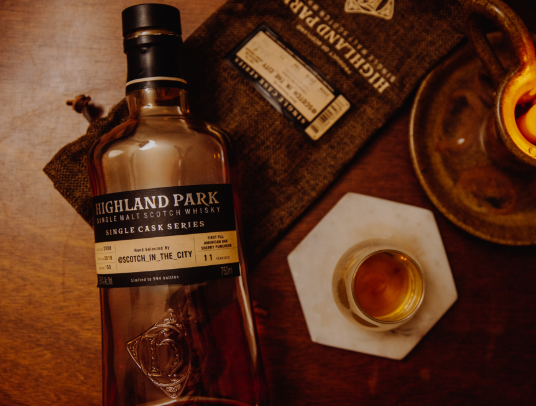
Whiskey tasting is much more than sipping a spirit — it’s a sensory journey that reveals aroma, craftsmanship, texture, and character in every pour. Whether you’re new to whiskey or trying to refine your palate, learning the whiskey tasting basics for beginners helps you taste with confidence and appreciate every glass on a deeper level.
What Are the Whiskey Tasting Basics for Beginners?
Understanding the fundamentals creates a strong foundation. These basics include choosing the right number of samples, selecting a theme, using proper glassware, following a tasting method, preparing your space, and taking notes.
How Many Whiskeys Should Beginners Taste?
A great tasting starts with a manageable number of samples. Most beginners enjoy 4–6 whiskeys, offering enough variety without overwhelming the senses.
At Whisky Education Foundation, our tastings usually include six 1-oz pours — smaller than the standard 1.5-oz shot — allowing you to explore depth and complexity while staying focused.
Choosing a Theme: A Key Part of Whiskey Tasting Basics for Beginners
Selecting a theme makes your tasting more meaningful and educational. Popular beginner-friendly themes include:
- Single-region Scotch: Speyside, Highlands, Islay
- Comparing whiskey types (Bourbon vs. Irish)
- Flavor-based: smoky, sweet, fruity, floral
- Japanese whiskey tasting
- Unique cask finishes (Sherry, Port, Wine, Rum)
At Whisky EDU, our Scottish Distilleries A–Z series features curated flights exploring 160+ distilleries, making it easier for beginners to understand regional style differences.
Use Proper Glassware for Whiskey Tasting
Glassware dramatically affects your tasting experience. For beginners:
- Best options: Glencairn, Copita, or Snifter
- Avoid: Tumblers (they dissipate aromas)
These glasses have a wide bowl and narrow rim, helping concentrate aromas — a critical part of whiskey tasting basics for beginners.
Glass Management Tips (Hygiene & Flavor Accuracy)
To avoid flavor mix-ups:
- Use one glass per whiskey, OR
- Rinse between samples with clean water
- Avoid mixing smoky/peated and delicate whiskeys in the same glass
Even tiny residue can change flavors.
Essential Tools & Snacks for a Whiskey Tasting
A smooth session requires more than whiskey. Prepare:
- Water: For sipping and palate cleansing
- Neutral snacks: Crackers, bread, pretzels
- Tasting notebook: Your notes will help you develop your palate
- Pipette/dropper: Optional — for adding drops of water to open the whiskey
Many beginners underestimate note-taking, but it’s one of the fastest ways to strengthen your tasting skills.
Step-by-Step Whiskey Tasting Method for Beginners
Follow this structured tasting routine to get consistent results:
1. Start Light, Then Move to Bold
Begin with gentle, light whiskeys and progress toward richer, smoky, or high-proof options.
2. Concentrate the Aromas
Cover the top of your glass with your palm for 10–20 seconds to trap aromas.
3. Nose the Whiskey
Bring the glass slowly toward your nose — don’t bury your nose in it.
Take gentle sniffs and note the first aroma that stands out:
Sweet, fruity, smoky, floral, woody, spicy, etc.
4. Taste with Intention
Sip slowly. Let the whiskey coat your palate.
Pay attention to:
- Sweetness
- Spice
- Mouthfeel
- Warmth
- Finish
- Evolving flavors
Write down everything you observe.
5. Cleanse Your Palate
Drink water and eat a neutral snack between samples.
This method will help beginners identify subtle notes and gain confidence.
Create the Perfect Whiskey Tasting Environment
A calm, distraction-free environment enhances the tasting experience:
- Choose a quiet room
- Avoid strong scents like candles, perfume, or cooking smells
- Use good lighting
- Ensure comfortable seating
Your senses work best when the space is clean and neutral.
Why Join a Guided Whiskey Tasting
While beginner tastings at home are fun, guided tastings offer deeper learning.
At the Whisky Education Foundation, you get:
- Premium whiskeys (often averaging $300 per bottle) at accessible prices
- Expert-led commentary
- Structured tasting methods
- Curated themes
- Virtual and in-person sessions
- Private events for groups
Guided tastings allow beginners to learn faster while experiencing exceptional-quality spirits.
Conclusion
Mastering the whiskey tasting basics for beginners opens a new world of flavor, aroma, and appreciation. With the right tools, a structured method, and a great environment, anyone can learn to taste whiskey like a pro. Whether at home or through guided sessions, these fundamentals will deepen your understanding and enjoyment of every pour.


